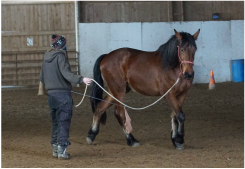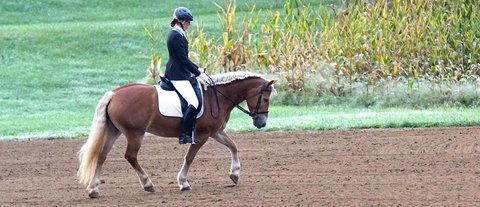Vaquero Horsemanship

What is Vaquero Horsemanship?
Tom Dorrance and Ray Hunt are considered by many in America to be the chief catylists for the revolution in Horsemanship in this country. Through their clinic format for teaching and spreading their brand of training, this "newer", often gentler, and more logical approach to training a horse found it's way to many student horseman hungry to find a "better way" with horses. Many of these students went on to become popular trainers in their own right, some adhering more or less closely to the actual principles and "heart" of what Dorrance and Hunt tried to teach. Out of this was born the term "Natural Horsemanship". This is not a term I tend to use, to me it implys a type of horsemanship which is meant to appeal to the masses and it's principles, tools, and techniques are designed more as marketing ploys than they are useful information about how to train a horse in a way that is understandable to the horse and also effective. There are as many different "flavors" of Natural Horsemanship as their are people who try to sell it. For that reason, I tend to use the term Vaquero Horsemanship, though most of those whose methods I admire would simply call it horsemanship.
For me, Vaquero Horsemanship is a great means of laying a strong foundation for all of a horse's future training. I have also found that the techniques and principles of this type of training complement Classical Dressage training. This makes sense, as the culture that brought us these techniques was thoroughly versed in the ways and means of Classical Dressage. Also, the ulitmate goal of the Vaquero (horseman) was collection and lightness (mabye best defined as a handiness brought about by a lack of resistance and athletic posture allowing the horse to be so), because these were the tools necessary not only for doing his job but also for his survival. The very first training and interaction of the horse and human is either headed down a path leading towards collection, lightness, and partnership - or it is not. If the very first lessons the horse learns are to resist until forced to submit through domination, as is often the case with most halter breaking, than the most basic association the horse has to the human is resistance. This will carry through every portion of his training until it is dealt with. On the other hand, if the horse is given the opportunity to make the choice to yield, this too can be carried through to the highest level of training.
Tom Dorrance and Ray Hunt are considered by many in America to be the chief catylists for the revolution in Horsemanship in this country. Through their clinic format for teaching and spreading their brand of training, this "newer", often gentler, and more logical approach to training a horse found it's way to many student horseman hungry to find a "better way" with horses. Many of these students went on to become popular trainers in their own right, some adhering more or less closely to the actual principles and "heart" of what Dorrance and Hunt tried to teach. Out of this was born the term "Natural Horsemanship". This is not a term I tend to use, to me it implys a type of horsemanship which is meant to appeal to the masses and it's principles, tools, and techniques are designed more as marketing ploys than they are useful information about how to train a horse in a way that is understandable to the horse and also effective. There are as many different "flavors" of Natural Horsemanship as their are people who try to sell it. For that reason, I tend to use the term Vaquero Horsemanship, though most of those whose methods I admire would simply call it horsemanship.
For me, Vaquero Horsemanship is a great means of laying a strong foundation for all of a horse's future training. I have also found that the techniques and principles of this type of training complement Classical Dressage training. This makes sense, as the culture that brought us these techniques was thoroughly versed in the ways and means of Classical Dressage. Also, the ulitmate goal of the Vaquero (horseman) was collection and lightness (mabye best defined as a handiness brought about by a lack of resistance and athletic posture allowing the horse to be so), because these were the tools necessary not only for doing his job but also for his survival. The very first training and interaction of the horse and human is either headed down a path leading towards collection, lightness, and partnership - or it is not. If the very first lessons the horse learns are to resist until forced to submit through domination, as is often the case with most halter breaking, than the most basic association the horse has to the human is resistance. This will carry through every portion of his training until it is dealt with. On the other hand, if the horse is given the opportunity to make the choice to yield, this too can be carried through to the highest level of training.
